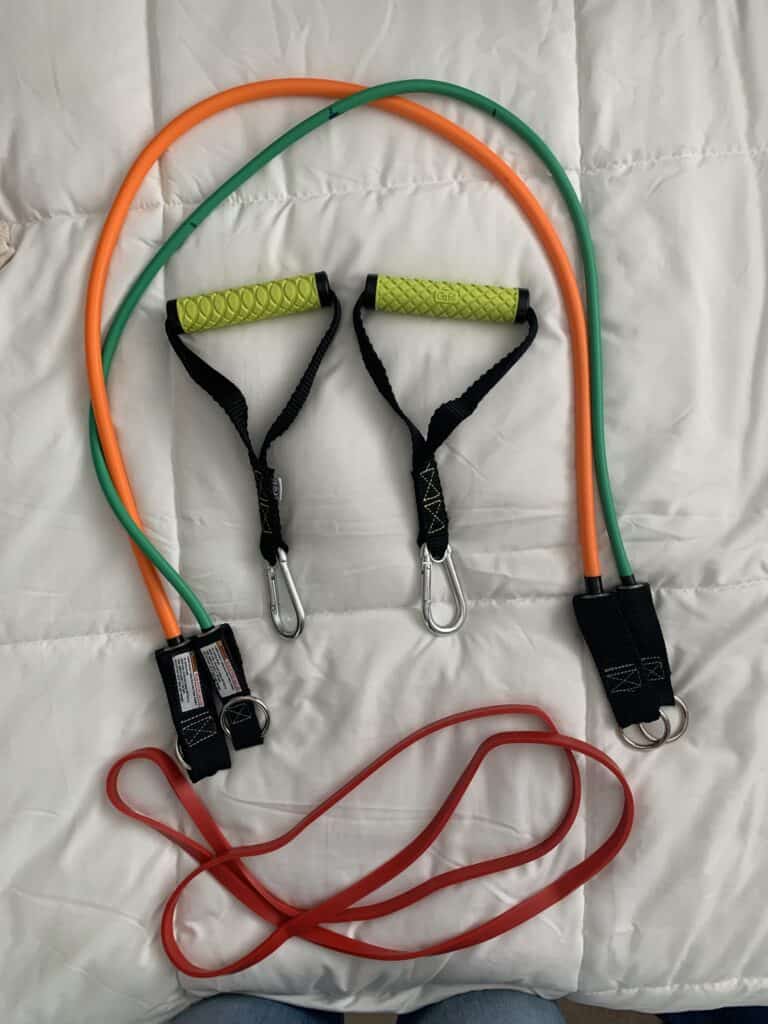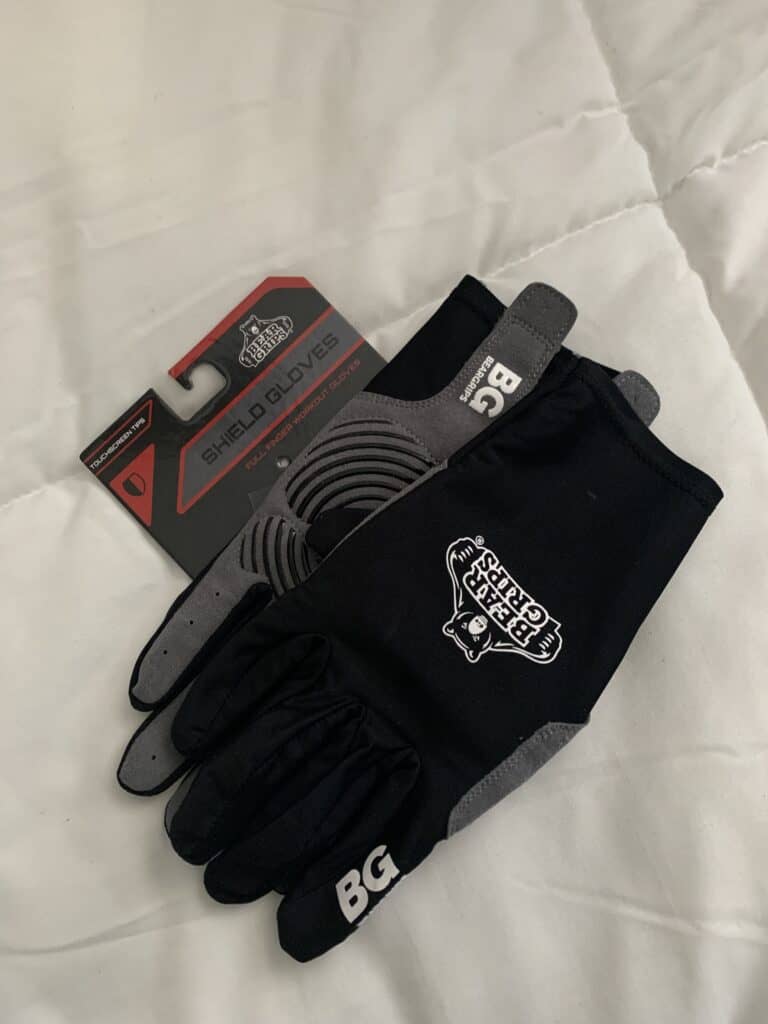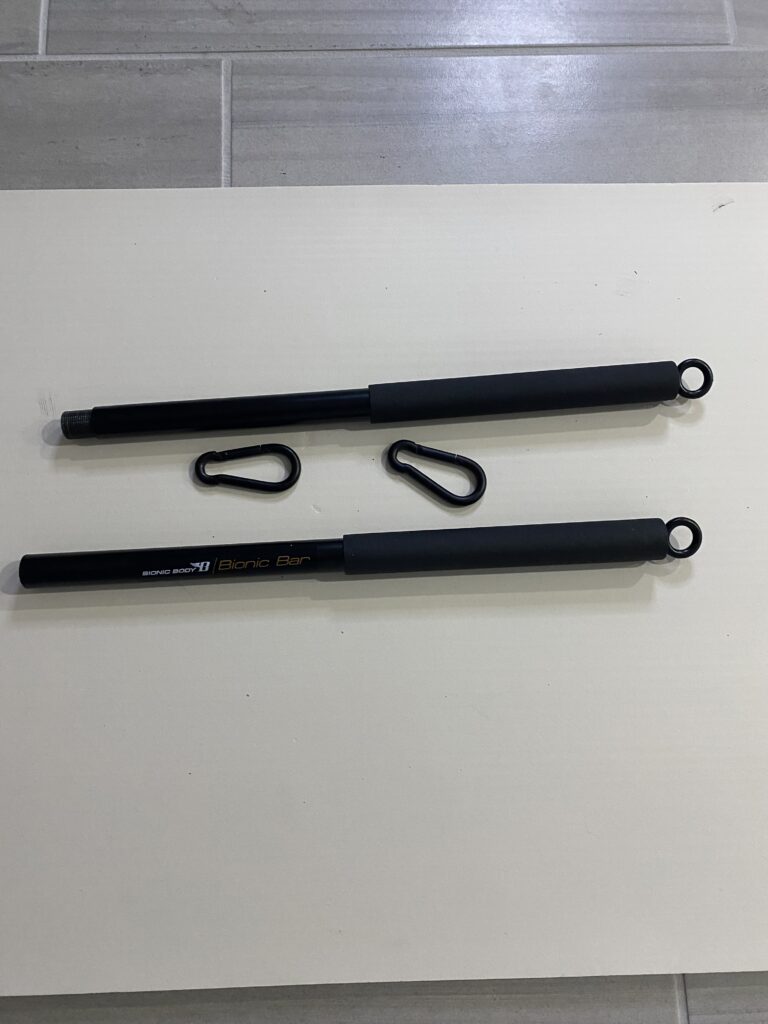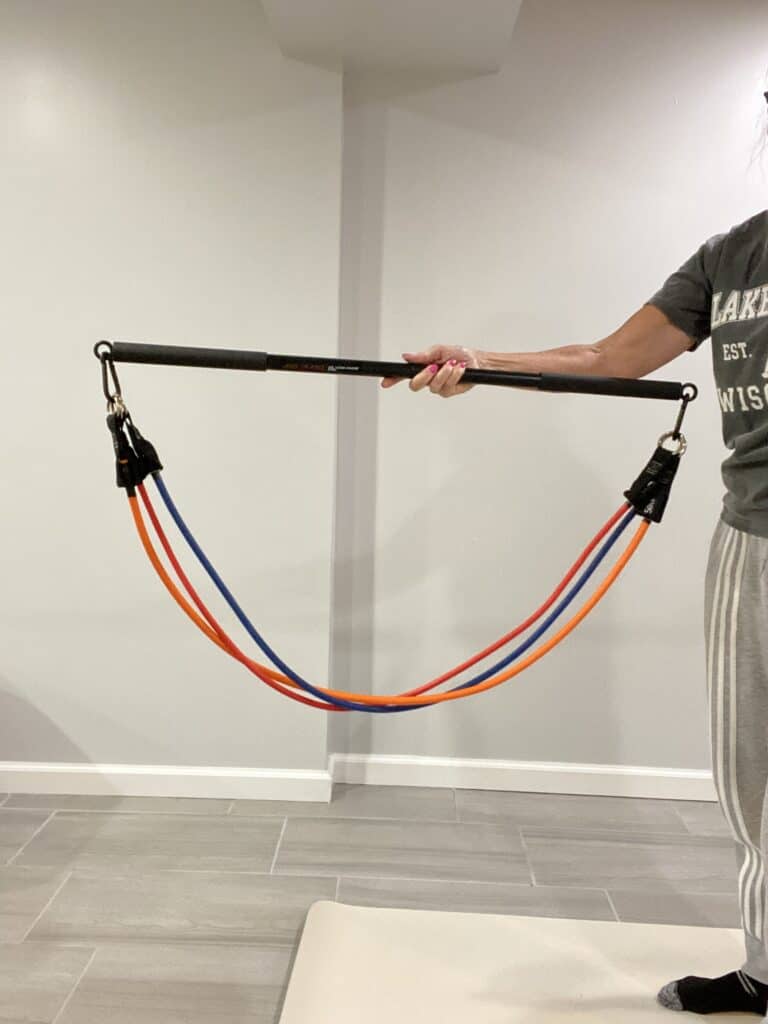How to Prevent Hand Pain When Using Resistance Bands
Have you ever experienced pain in your hands or wrists while using resistance bands?
I know I have.
Recently I started a 30-day resistance band training program to see if they were as good as using free weights for weight training.
However, after just a few days, I noticed that the bands were starting to cause sharp pain in my wrist and were also tearing up my hands.
At first, I didn’t think much of it. But as the days went on, the pain became unbearable, and I was ready to quit my exercise program altogether.
I didn’t want to give up on my fitness goals, so I started experimenting with different ways to protect my hands and wrists while still being able to use the resistance bands.
The good news is that with some trial and error, I found a few different ways to not only protect my hands and wrists but also allowed me to continue with the program.
So, if you’re struggling with the same issues, keep reading to learn about the different options that I found.
Common Causes of Hand Pain
Hand and wrist pain is a common problem that many people experience when using an exercise band.
The pain can be caused by several factors, including using the wrong type of band, using a band with too much resistance, or using poor form during exercises.
Hand pain can also be caused by gripping the band too tightly, using worn-out or damaged bands, or overusing the bands without proper rest.
To prevent hand pain when using resistance bands, it is important to choose the right type of band for your workout, use proper form during exercises, and avoid overusing the bands.
It is also important to find ways to protect your hands and take breaks between workouts and to stretch your hands and wrists before and after using the bands.
Proper Hand Positioning
When using resistance bands, you need to make sure that you are using good form.
This is one of the best ways to help with injury prevention.
Here are two important things to keep in mind regarding hand positioning:
Grip Techniques
There are two main grip techniques when using resistance bands: the full grip and the open grip.
The full grip is when you wrap your fingers around the band with a strong grip, while the open grip is when you rest the band in your hand with the palm facing up and your fingers on top of the band.
There are advantages and disadvantages of each type of grip.
The full grip gives you more stability and control but can put more strain on your fingers and hands.
The open grip has less stress on your fingers and hands but can be less stable and more difficult to control.
You will need to experiment with both grip techniques to see which one works best for you.
Wrist Alignment
Proper wrist alignment is also important when using resistance bands.
Your wrists should be in a neutral position, which means that they are not flexed or extended.
Your wrists should be aligned with your forearms and not bent in any direction.
This helps to avoid putting unnecessary stress on your joints and tendons.
Correct Resistance Band Usage
When using resistance bands, proper technique is important to prevent wrist and hand pain.
Here are some tips:
Choosing the Right Band
It is important to choose the right resistance band for your fitness level.
Using a band that is too strong can cause unnecessary strain on your hands and lead to pain.
On the other hand, using a band that is too weak may not provide enough resistance for a good workout.
Start with a lighter resistance and gradually increase as your strength improves.
Maintaining Control During Exercise
When using resistance bands, it is important to maintain control throughout the exercise.
Jerky movements can cause unnecessary strain on your hands and lead to pain.
To maintain control, keep your wrists straight and avoid bending them during the exercise.
Use slow, controlled movements and focus on engaging the muscles you are targeting.
Avoiding Overextension
Overextending the resistance band can cause pain and discomfort in your hands.
To avoid overextension, make sure the band is securely anchored before starting your exercise.
Also, avoid pulling the band too far apart as this can cause unnecessary strain on your hands.
Focus on keeping the band at a comfortable distance and increase the resistance gradually as your strength improves.
Additional Tips for Pain Prevention
Regular Breaks
Taking breaks during your resistance band workout can help prevent hand pain.
I recommend taking a 30-second break in between each set of exercise.
During this break, stretch your hands and fingers, and shake them out to increase blood flow.
Strength Training for Hands
You should also include strength training for your hands.
This will help improve your grip strength and reduce the risk of hand pain.
Some specific exercises you can try includes squeezing a stress ball, gripping a hand gripper, or using a hand strengthener.
Using Accessories
Using accessories can also help prevent hand pain when using resistance bands.
Here are a few options:
Using Handles with Your Bands
The first thing that I tried were resistance bands with handles – what a game changer!
The handles are padded and have a wide base to hold onto, this helps to distributes the weight of the band across the handle.
It takes the pressure off the palm of my hand and the area between my thumb and index finger, making it more comfortable to perform exercises like lat pull downs, bicep curls, and rows.

Padded Gloves
I then tried my weight lifting gloves.
The gloves have been great so far!
They provide extra padding to protect my hands, especially the area between my thumb and index finger which always seems to take the most pressure.
With these gloves, I’m able to do exercises like lunges, push-ups and split squats without killing my hands.
Another benefit of these gloves is that they are lightweight and breathable. They don’t make my hands sweat or cause any friction on my skin.
They were especially helpful when using thicker pull up assist loop bands.

Wrist Wraps
One of the best options that I found to help with hand and wrist pain were wrist wraps or wrist support bands.
I used the wraps that I had from my boxing days.
They are made of cloth, either a roll of cloth that you use like an elastic ACE wrap or they can come as a wrist support.
I again had the wrist support from boxing.
The wrist support covers the hand but not the fingers.
They added extra support to the wrist and since they covered the hand/palm it protected my hand from the pressure of the bands.

The Resistance Band Bar
For a certain traditional strength training exercises, you need to use a wider grip.
I’m referring to exercises like lat pull downs, bench press, front raises, and deadlifts.
So, I decided to try the resistance band bar, and I’m so glad I did!
The bar is the closest thing to an actual barbell, which made it feel more familiar and comfortable to me.
It also seems to keep my arms level so that I work equally on each side.
The resistance band bar is padded on the outer part of the bar, which makes it very comfortable for my hands.
I use the bar with both tube bands and pull-up assist bands, and it works great for both.
I did go further into the details about the bar in my article What Are Resistance Band Bars: Are They Worth the Expense?


Conclusion
So, there you have it – everything you need to know about preventing hand and wrist pain when using resistance bands.
By implementing these simple tips, you can continue to enjoy the benefits of resistance band training without any discomfort or risk of injury.
Remember, proper form and technique are key, and don’t be afraid to modify or adjust your routine to fit your needs.
It’s always important to listen to your body and give it the care and attention it deserves.
If you have any additional tips or suggestions for preventing hand and wrist pain while using resistance bands, feel free to share them in the comments below.
Together, we can all strive towards a healthier and happier life through exercise.
Thank you for reading, and I wish you all happy and pain-free workouts!
